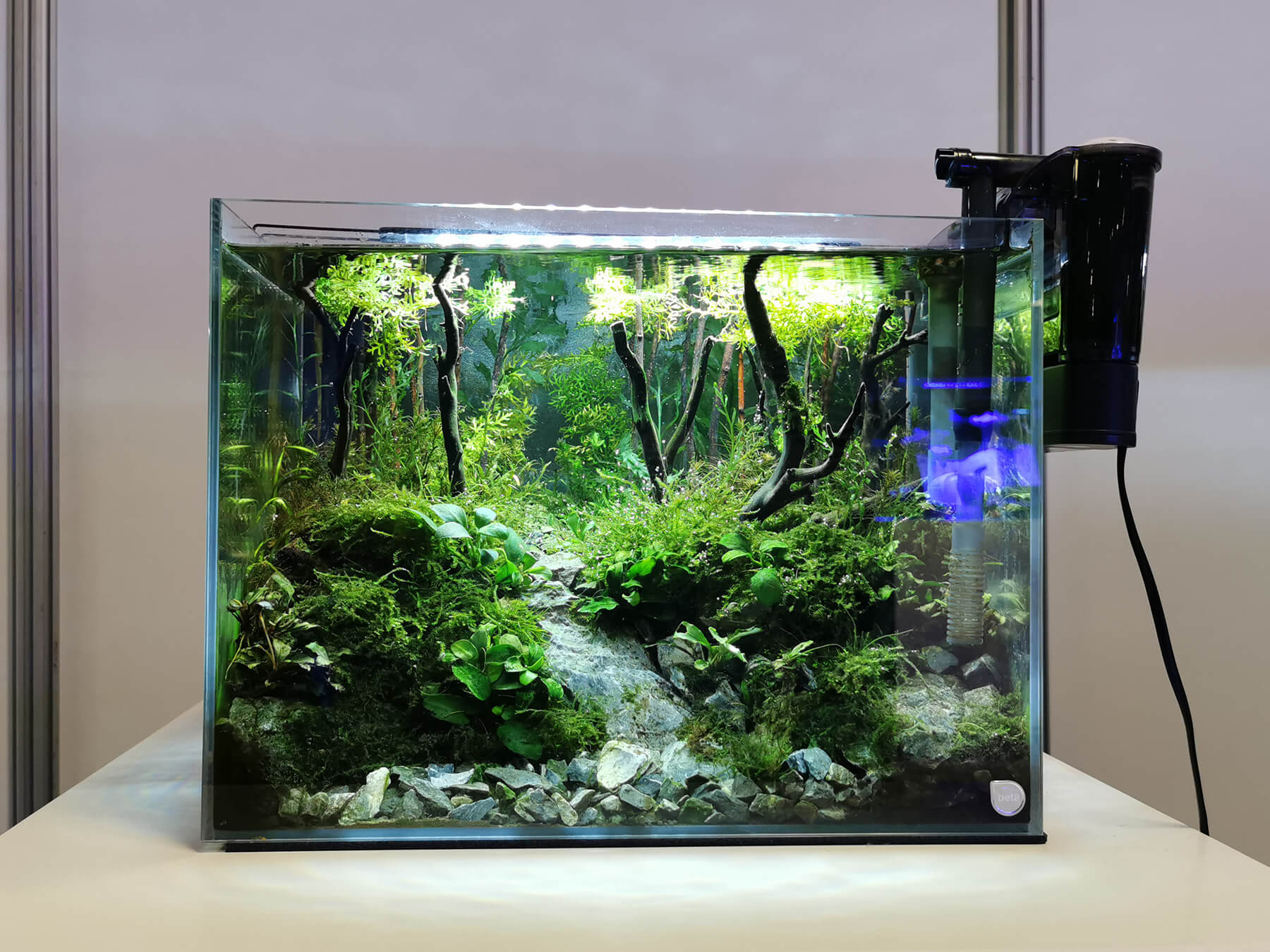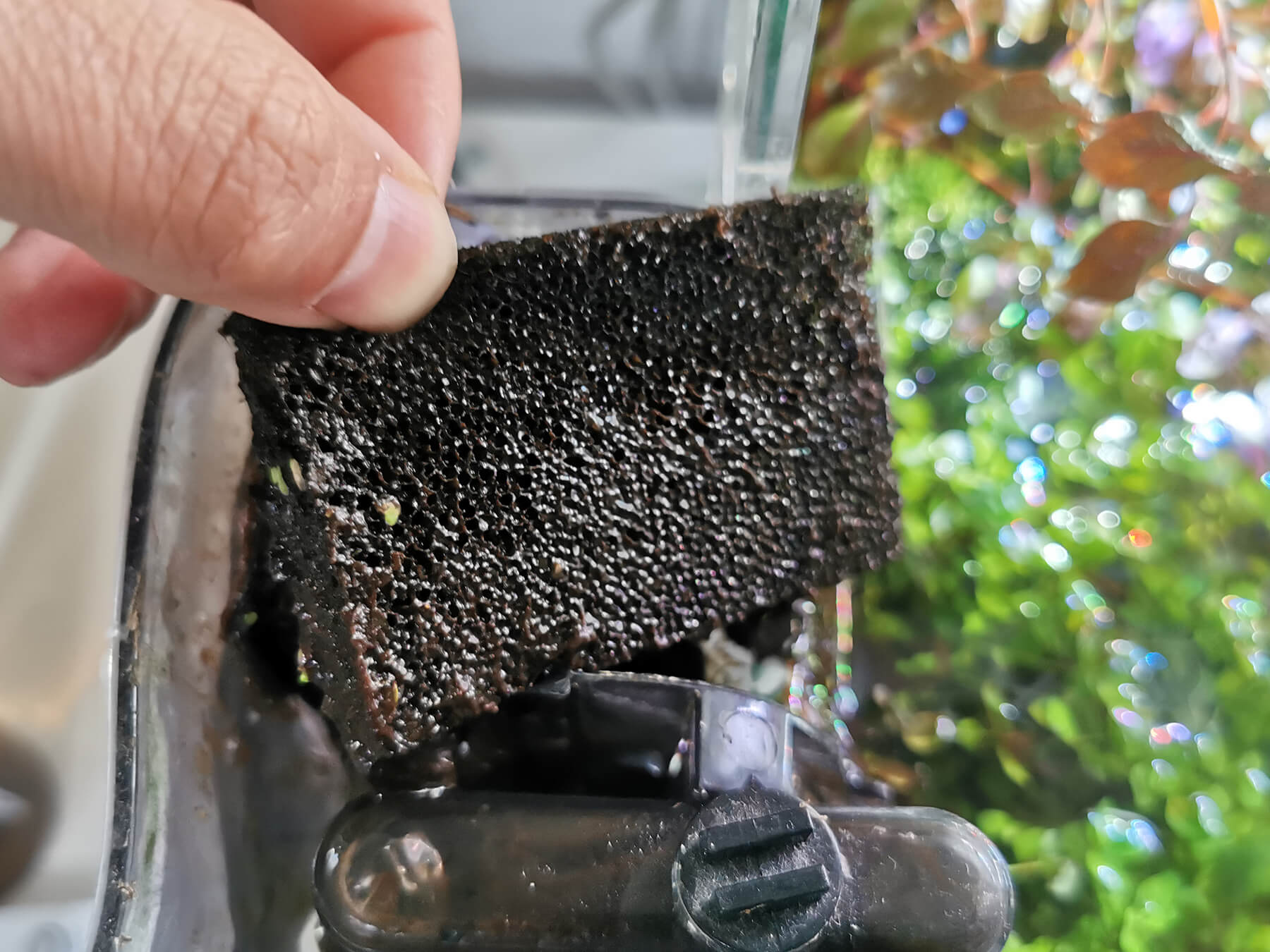Animating the filter in the aquarium
Table of contents
- How does the filter actually work in the aquarium?
- Animating the filter
- What happens after inoculation?
How does the filter work in the aquarium?
In general, aquariums with an aquarium filter run much more stable than filterless tanks. Depending on the size of the aquarium, various filters are available for filtration: External filter, internal filter, backpack filter, sponge filter, mat filter, ... they all have in common that they filter the aquarium water both biologically and mechanically.

Mechanical filtration
Mechanical filtration of the aquarium is quickly explained: coarse and fine filter materialin the aquarium filter retains suspended and turbid matter from the aquarium water, ensuring visually clear, clean water. The filter materials need to be washed out from time to time because they become clogged over time due to their mechanical filtering action and then water can no longer flow through the filter.
For regular washing of the filter media, always use clear, cold water without any other additives such as soap or disinfectants. Why? So that the biological filtering ability is not impaired, which we will come to in the next section.
Biological filtration
The biological filtration function is performed by bacteria that take care of the decomposition of organic pollutants - fish feces, the feces of snails and shrimp, and of course dead plant debris and uneaten food. In the process, ammonium, nitrite and then nitrate are converted into each other in the order in which they occur. You can read exactly how this works in the article "The nitrogen cycle in shrimp aquariums" - by the way, the degradation chain works in exactly the same way in fish aquariums.
Actually, these filter bacteria are quite normal soil bacteria that occur in garden soil and are even part of the natural dust. They also settle not only in the aquarium filter, but also in the first few centimeters of the substrate and on all surfaces in the aquarium - in the so-called biofilms. In principle, you could simply wait - some of the little helpers swirl through the air and gradually colonize an aquarium that has not been inoculated - or bring a piece of decoration, a stone or a wooden root or a few plants from a running aquarium into the new tank. This would create an appropriate bacterial flora over time - but this can take time.
Animating the filter
The filter in the aquarium can be animated to get the nitrogen cycle going and to shorten the start-up time. Inoculation quickly introduces a large number of filter bacteria into the system, ensuring that pollutant removal picks up speed and that a filter flora can develop that matches the biology in the aquarium.
Mulm from a running aquarium
You often hear that simply squeezing out the filter sponge from a running aquarium in the new tank will give you filter bacteria right where you need them. Of course, this is true, but it is important to know that filter bacteria are adapted to each aquarium they colonize. Over time, the biodiversity of the bioflora can become significantly depleted, leaving only a few very dominant bacterial species. It is very possible that these few species will then not be a good fit for the new aquarium at all. It is therefore quite possible that the aquarium will never really run stably in this way. Therefore there are much more suitable methods to inoculate the aquarium than bringing in mulm from another aquarium.

Bacteria starter
With a filter starter or bacterial starter you directly introduce many good bacteria into the aquarium - the preparation contains not only a very large amount of bacteria, but also extremely many different species. This allows a specific bacterial flora to develop, which is precisely adapted to the conditions in the aquarium. By the way, it can't hurt to inoculate from time to time - as described above, the bacterial flora in the aquarium tends to become impoverished, and if the conditions then change, the filter biology no longer works so well. Therefore, it is not a mistake to introduce new species every now and then through a bacterial starter. This way, the breakdown of pollutants in the aquarium filter is always guaranteed.
Earth infusion
Old aquarists still know and appreciate it: the good old soil infusion. Because - as explained above - the filter bacteria are actually soil bacteria, you can do a lot with a few crumbs of garden soil in the aquarium that has not been fertilized or treated in any other way. Important: Do not heat or steam the soil before use! Pre-treated garden soil from a plastic bag is of no use to us, it must be natural garden soil.
For a classic soil infusion, stir about half a teaspoon of garden soil into a glass filled with aquarium water. Then let the soil settle. The water will then be slightly brownish cloudy. Add one tablespoon of this water per 50 liters of aquarium contents to the new aquarium to inoculate it with the necessary filter bacteria. No more - so that there is no bacterial bloom! Much does not help much in this case.
With this slurry of garden soil, you immediately bring into the aquarium a very large number of beneficial bacteria that can break down pollutants. Even with an infusion of soil, you can develop exactly the bacterial flora that the aquarium needs. Just as with a good filter starter, you can also obtain a customized aquarium flora with a soil infusion.
What happens after inoculation?
Now we have introduced many good bacteria into the aquarium, which can take care of pollutants and organic residues, now of course we have to make sure that they multiply and find appropriate "food" that they can utilize. In principle, an inoculated aquarium can be stocked directly with (a few) fish or invertebrates. Especially snails are good candidates here. They eat emerging algae films and take care of plant remains.
If you do not want to put any animals into the aquarium during the sensitive start-up phase, you should still feed the bacteria in the filter - a few crumbs of fish food or shrimp food a day will ensure an appropriate supply of nutrients.
If there is no more nitrite even after heavy feeding (please check with a nitrite test ), the aquarium can be stocked with animals with a clear conscience.
In the first weeks after initial stocking, the aquarium should nevertheless be tested daily for a possible increase in the nitrite value. The biology in the fresh tank is still quite shaky, and even small errors can be very detrimental to the fish. Therefore, it is better to measure too much once and then counteract with water changes if nitrite builds up, than to measure too little once and risk losing the fish in the aquarium.
